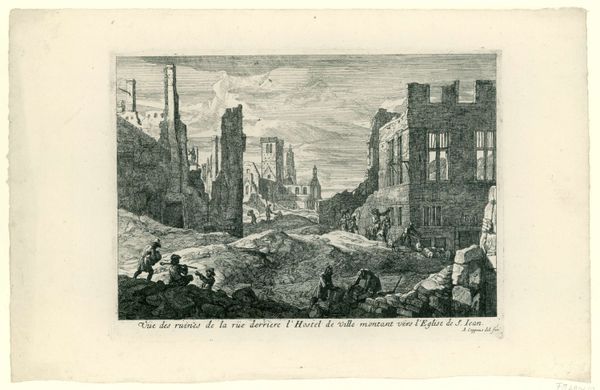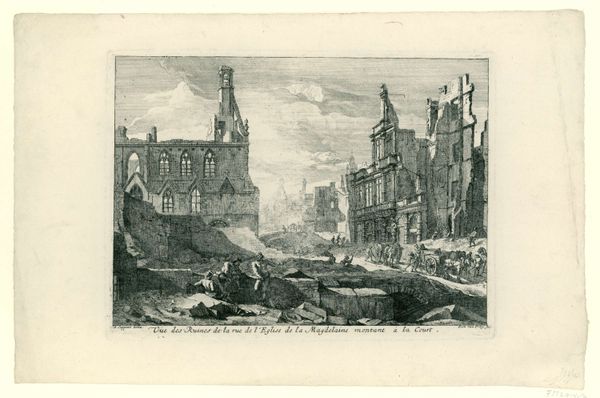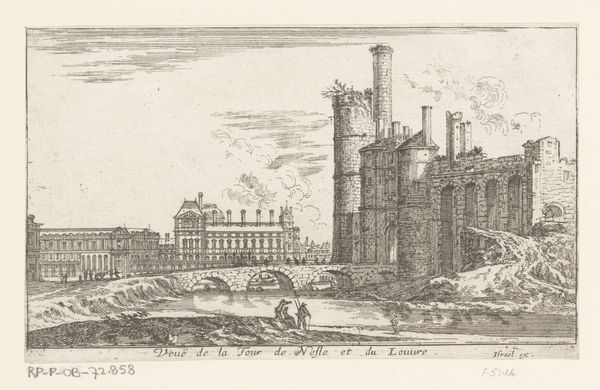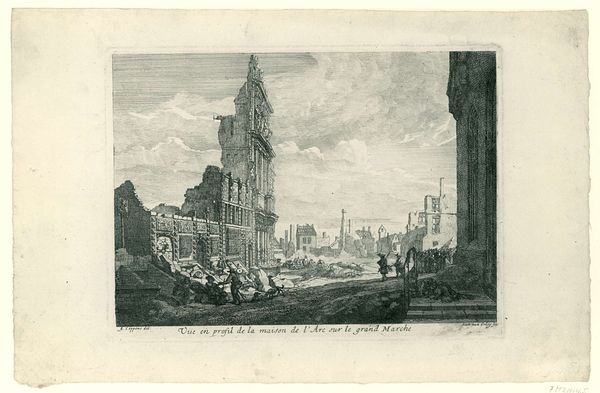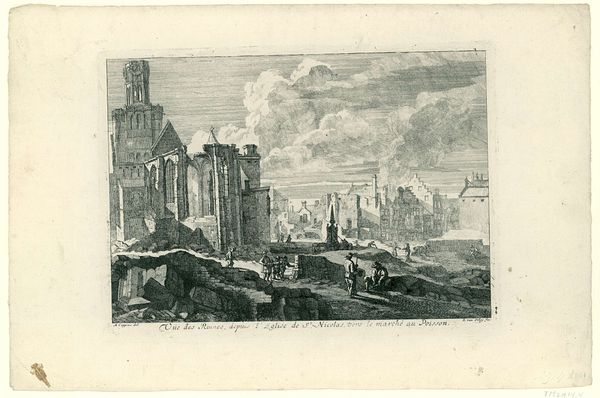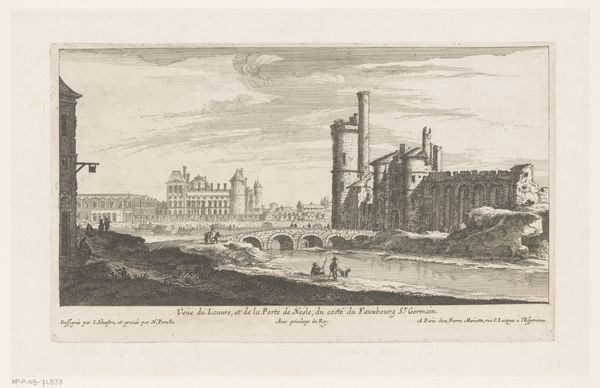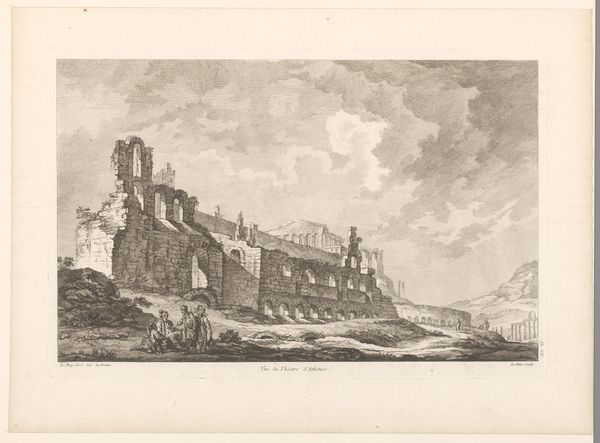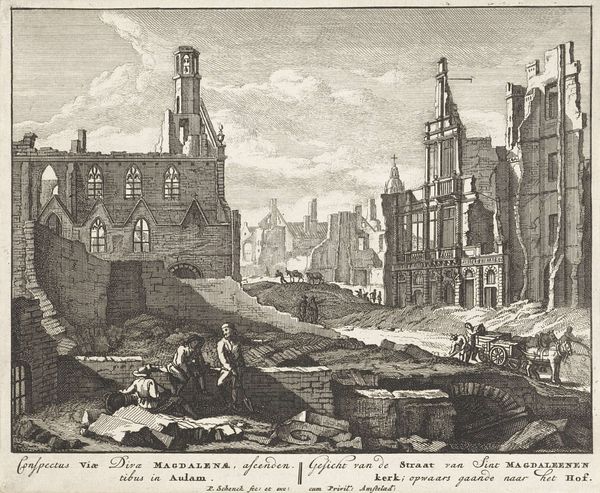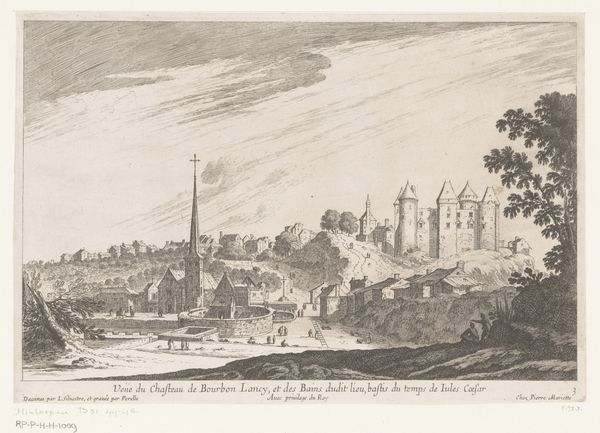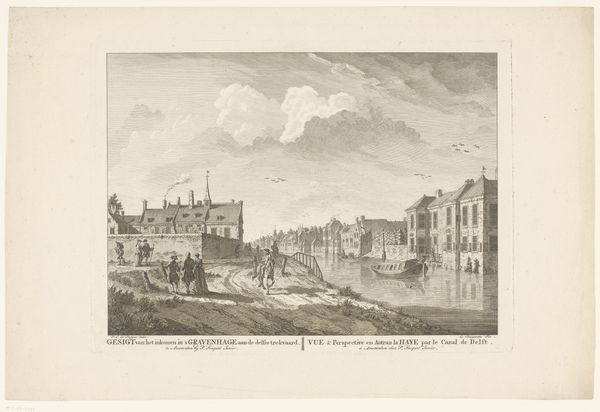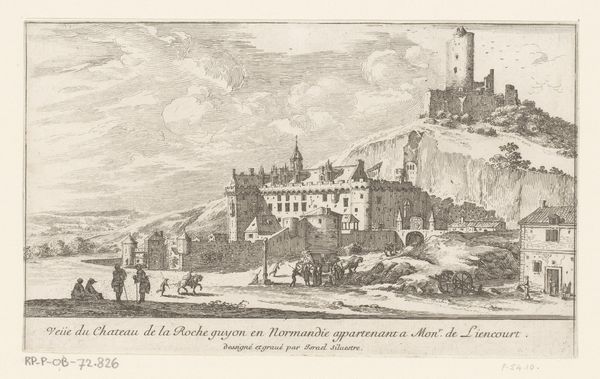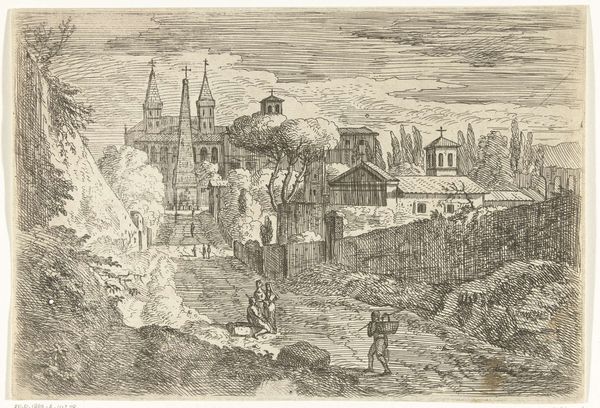
print, etching, engraving
#
baroque
# print
#
etching
#
cityscape
#
history-painting
#
engraving
Dimensions: height 255 mm, width 388 mm
Copyright: Rijks Museum: Open Domain
Curator: This etching by Richard van Orley, created in 1695, depicts the ruins of the Grand Place in Brussels after its bombardment. Editor: The scene is just utterly bleak. Look at the desolate, monochromatic landscape, with its jagged ruins silhouetted against a stormy sky. You feel the destruction in your gut. Curator: It certainly captures a moment of profound trauma for Brussels. What strikes me is how Orley, working in the Baroque style, renders not just the physical damage, but the enduring presence of iconic structures despite the devastation. Notice how the skeletal remains still evoke the original grandeur. They carry an almost haunting symbolic weight, right? Editor: Right, but consider the historical context. This wasn't just random chaos, this was an act of war perpetrated by Louis XIV’s troops. That visual weight you describe also functions as a potent critique of power and the consequences of unchecked aggression. It becomes more than a depiction of architectural loss, it's about the deliberate destruction of culture and the subjugation of a people. Curator: I see that perspective, certainly. Though I also read something deeper in those enduring outlines. Brussels rose again; there is continuity amidst rupture, suggesting something elemental about the city's spirit. Those faint surviving towers become symbols of resilience. Editor: Perhaps, but let’s not sanitize history with romantic notions of "spirit". Remember who suffers most in these conflicts. Observe the tiny figures amidst the rubble—these are not noble victims of tragedy, but ordinary people picking up the pieces, displaced, mourning, their lives irrevocably altered by the machinations of empires. The "spirit" you refer to is born of that struggle. Curator: A powerful point, yes. Ultimately, what van Orley's print transmits, beyond historical record, are complex layers of grief, resilience, and perhaps even a warning. Editor: Yes, a reminder that the beautiful facades of power often mask profound injustices, and that the true story is always in the rubble, in the faces of those who survive.
Comments
No comments
Be the first to comment and join the conversation on the ultimate creative platform.
